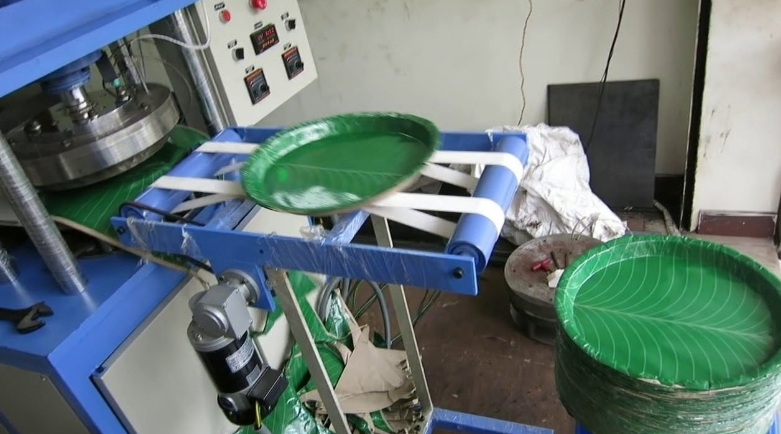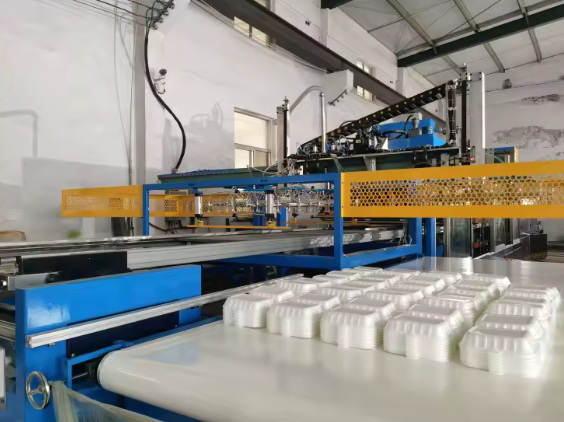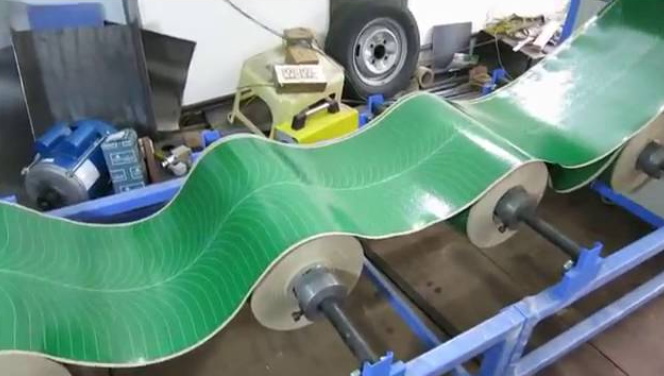
Content Menu
● Introduction to Disposable Plate Machines
>> Types of Disposable Plate Machines
● Disposable Plate Machine Price in India
>> Factors Influencing Machine Prices
● Market Trends and Future Outlook
>> Impact of Government Regulations
>> Technological Innovations
● Benefits of Investing in Disposable Plate Machines
● Challenges and Opportunities
>> Overcoming Challenges
>> Market Competition
>> Role of Technology in Enhancing Efficiency
● Case Studies: Successful Businesses
>> Example: Areca Leaf Plate Manufacturers
● Future Prospects
>> Emerging Trends
>> Impact of Global Market Trends
● Conclusion
● FAQs
>> 1. What is the typical price range for a fully automatic disposable plate machine in India?
>> 2. How does the production capacity affect the price of disposable plate machines?
>> 3. What materials can disposable plate machines produce plates from?
>> 4. What are the key factors influencing the price of disposable plate machines?
>> 5. How do government regulations impact the demand for disposable plate machines?
The demand for disposable plates has seen a significant rise in recent years, driven by their convenience and the increasing awareness of hygiene and sanitation. In India, the market for disposable plates is booming, with a growing emphasis on eco-friendly alternatives to traditional plastic plates. This article will delve into the world of disposable plate machines, focusing on their prices in India, types, and the factors influencing their cost.

Introduction to Disposable Plate Machines
Disposable plate machines are designed to manufacture plates from various materials, including paper, areca leaves, and biodegradable plastics. These machines are crucial for businesses looking to capitalize on the growing demand for disposable tableware. The machines vary in complexity, ranging from manual to fully automatic models, each catering to different production needs and budgets.
Types of Disposable Plate Machines
1. Manual Machines: These are the most basic and cost-effective options. They require manual labor to operate and are suitable for small-scale production. Manual machines are ideal for small businesses or startups with limited capital and are often used in areas where electricity is unreliable or expensive. They can produce between 500 to 1,000 plates per day, depending on the operator's efficiency.
2. Semi-Automatic Machines: These machines offer a balance between manual and automatic operations, requiring some human intervention but increasing production efficiency. Semi-automatic machines are more expensive than manual ones but are still affordable for medium-sized businesses. They can produce between 1,000 to 2,000 plates per day. The cost of a semi-automatic paper plate maker can start from around ₹40,000.
3. Fully Automatic Machines: These are the most advanced models, capable of high-volume production with minimal human intervention. They are ideal for large-scale industrial operations. Fully automatic machines can produce between 2,000 to 10,000 plates per day, depending on the model. These machines are equipped with advanced controls like PLCs and touch-screen interfaces for easy operation.
Disposable Plate Machine Price in India
The prices of disposable plate machines in India vary widely based on their type, production capacity, and material used.
- Manual Machines: These are typically the cheapest, with prices starting from around ₹10,000 to ₹50,000. They are suitable for small-scale operations and require minimal investment.
- Semi-Automatic Machines: Prices for semi-automatic machines range from ₹40,000 to ₹200,000, depending on the features and capacity. For instance, a basic semi-automatic paper plate maker can cost around ₹40,000, while more advanced models may reach up to ₹200,000.
- Fully Automatic Machines: These are the most expensive, with prices ranging from ₹1.2 lakh to ₹2.5 lakh or more, depending on the brand and specifications. For example, a fully automatic paper plate making machine with a production capacity of 3000 plates per hour can cost around ₹1.5 lakh to ₹2.5 lakh.
Factors Influencing Machine Prices
1. Production Capacity: Machines with higher production capacities generally cost more. For instance, a machine capable of producing 3000 plates per hour will be more expensive than one producing 1000 plates per hour.
2. Material Used: Machines designed for specific materials, like areca leaves or paper, may have different price points. Areca leaf plate making machines, for example, can cost between ₹1.35 lakh to ₹2.35 lakh, depending on their automation level and capacity.
3. Automation Level: Fully automatic machines are more expensive than semi-automatic or manual ones due to their advanced technology and efficiency.
4. Brand and Quality: Reputable brands and high-quality machines tend to be pricier. Machines from well-known manufacturers often come with better warranties and support, justifying their higher cost.

Market Trends and Future Outlook
The disposable plate market is expected to grow significantly due to increasing demand for eco-friendly products and government regulations against plastic use. This trend is likely to influence the prices of disposable plate machines, with a potential increase in demand for machines that produce biodegradable plates.
Impact of Government Regulations
Government policies aimed at reducing plastic waste are driving the demand for biodegradable disposable plates. This shift is expected to increase the demand for machines capable of producing such plates, potentially affecting their prices. Biodegradable cutlery machines, for instance, are gaining popularity due to their efficiency and environmental benefits.
Technological Innovations
Technological advancements, such as 3D printing and automation, are transforming the manufacturing sector. These innovations enable faster prototyping, customization, and production of complex designs, reducing production costs and waste. In the future, we can expect more machines to incorporate these technologies, enhancing efficiency and sustainability.
Benefits of Investing in Disposable Plate Machines
Investing in disposable plate machines offers several benefits, especially for small-scale businesses:
1. Low Initial Investment: Starting a paper plate making business requires relatively low capital, making it accessible to entrepreneurs with limited funds.
2. High Demand: The demand for disposable plates is high, driven by their convenience and eco-friendliness. This ensures a steady market for products made from these machines.
3. Environmental Benefits: Paper plates are biodegradable and reduce plastic waste, aligning with global sustainability goals.
4. Customization Options: Modern machines allow for customization of plate sizes and designs, catering to various customer needs.
5. Profit Potential: With low production costs and high demand, businesses can achieve significant profit margins.
Challenges and Opportunities
Despite the benefits, there are challenges in the industry, such as competition from established players and the need for quality standardization. However, these challenges also present opportunities for innovation and differentiation.
Overcoming Challenges
To succeed in this market, businesses must focus on quality, innovation, and customer service. Investing in high-quality machines and ensuring consistent production standards can help build a strong reputation and customer loyalty.
Market Competition
The disposable plate market is highly competitive, with numerous players offering a range of products. To stand out, businesses need to innovate in terms of product design, material quality, and pricing strategies. Offering customized products or services can also help differentiate a business from competitors.
Role of Technology in Enhancing Efficiency
Technology plays a crucial role in enhancing the efficiency of disposable plate machines. Advanced automation systems can optimize production processes, reduce waste, and improve product quality. Moreover, technologies like IoT can be integrated to monitor machine performance remotely, reducing downtime and increasing overall productivity.
Case Studies: Successful Businesses
Several businesses in India have successfully capitalized on the demand for disposable plates by investing in efficient machines and focusing on quality and innovation. For instance, companies that have shifted from traditional plastic to biodegradable materials have seen significant growth in demand and customer loyalty.
Example: Areca Leaf Plate Manufacturers
Areca leaf plate manufacturers have seen a surge in demand due to their eco-friendly nature. These plates are biodegradable and compostable, making them an attractive option for environmentally conscious consumers. Businesses that have invested in areca leaf plate making machines have reported high returns on investment due to the growing demand for these products.
Future Prospects
The future of the disposable plate industry looks promising, with a growing emphasis on sustainability and eco-friendliness. As technology continues to evolve, we can expect more efficient and cost-effective machines to enter the market, further driving growth in this sector.
Emerging Trends
Emerging trends in the industry include the use of innovative materials and designs that enhance the functionality and appeal of disposable plates. For example, some manufacturers are exploring the use of bamboo and sugarcane bagasse as alternatives to traditional paper and areca leaves. These materials offer unique benefits such as higher strength and better biodegradability.
Impact of Global Market Trends
Global market trends also play a significant role in shaping the Indian disposable plate market. International demand for eco-friendly products is driving innovation and investment in sustainable technologies. Indian businesses can leverage these global trends to expand their market reach and diversify their product offerings.
Conclusion
The price of disposable plate machines in India varies significantly based on factors such as automation level, production capacity, and material used. As the market continues to grow, driven by environmental concerns and government regulations, the demand for these machines is likely to increase, potentially influencing their prices. Investing in disposable plate machines can be a profitable venture, especially for small-scale businesses looking to capitalize on the trend towards eco-friendly products.

FAQs
1. What is the typical price range for a fully automatic disposable plate machine in India?
The price for a fully automatic disposable plate machine in India typically ranges from ₹1.2 lakh to ₹2.5 lakh or more, depending on the brand and specifications.
2. How does the production capacity affect the price of disposable plate machines?
Machines with higher production capacities generally cost more due to their ability to produce larger quantities of plates per hour.
3. What materials can disposable plate machines produce plates from?
Disposable plate machines can produce plates from various materials, including paper, areca leaves, and biodegradable plastics.
4. What are the key factors influencing the price of disposable plate machines?
Key factors include production capacity, material used, automation level, and brand reputation.
5. How do government regulations impact the demand for disposable plate machines?
Government regulations promoting the use of biodegradable materials are driving the demand for machines that produce eco-friendly disposable plates, potentially increasing their prices due to higher demand.

















